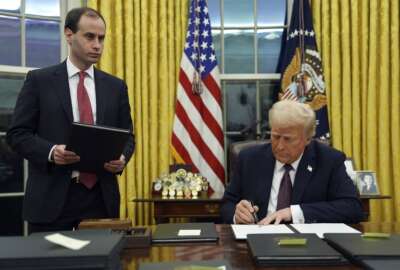Insight by FEBA
Understanding how FEHB and Medicare work together in retirement
Here’s what federal employees need to know about FEHB and Medicare in retirement.
Federal retirees face important decisions when it comes to managing their health insurance. With the Federal Employees Health Benefits (FEHB) program and Medicare options on the table, the goal is to maximize coverage while minimizing costs. Here’s what federal employees need to know about FEHB and Medicare in retirement.
Continuing FEHB coverage in retirement
Under certain eligibility requirements, federal employees can continue their FEHB coverage into retirement. These requirements include enrollment in FEHB for at least five consecutive years leading up to, and having coverage on, the retirement date. It is important to note that qualified spouses, dependent children, and children with disabilities can be covered without meeting this five-year rule.
Employees become classified as annuitants upon retiring, at which point the government will continue to cover about 72% of the FEHB premium. For postal retirees, there are slight variations in this contribution. Deductions for FEHB premiums will be taken monthly from your annuity, and the payments are post-tax, unlike the pre-tax deductions taken while employed.
Medicare: What you need to know
Medicare eligibility starts at age 65, but participation is optional for all except postal retirees. Medicare has four parts:
- Part A: Hospital coverage which is free for most retirees.
- Part B: Medical insurance for outpatient care and doctor visits, with premiums around $175 per month or higher, depending on income.
- Part C: Medicare Advantage plans, which combine Parts A and B with additional benefits.
- Part D: Prescription drug coverage.
Delaying enrollment in Part B when eligible – at age 65 or within eight months of federal retirement – could bring late enrollment penalties. While employed, FEHB is the primary insurance, but Medicare takes over as the primary payer after retirement.
FEHB: Cancel or suspend?
Retirees have two choices when it comes to managing their FEHB coverage alongside Medicare: canceling or suspending.
The important thing to remember about FEHB cancellation is that it’s a final decision. The action is permanent and irreversible, meaning you will no longer have access to FEHB.
On the other hand, suspension allows a temporary pause to FEHB coverage if you choose Medicare Advantage, Medicaid or are eligible for TRICARE for Life, which may benefit your individual situation better. You can reinstate your FEHB coverage during an open season later if you so choose.
Maximizing health coverage in retirement
Retirees have several strategies for combining FEHB with Medicare:
- Keep FEHB and enroll only in Medicare Part A: This allows flexibility in provider choice and may be preferable for those who travel or live abroad, since Medicare would be secondary to FEHB in those scenarios.
- Enroll in both Medicare Parts A and B while continuing FEHB: This offers nearly comprehensive coverage, with Medicare as the primary payer and FEHB as secondary. To reduce costs, some retirees opt for a basic FEHB plan.
- Suspend FEHB and switch to Medicare Advantage: To be eligible for Medicare Advantage, retirees must first be covered by Medicare A and B. This will be the most cost-effective on the monthly budget because most Medicare Advantage plans come with a zero-dollar premium. Retirees also have the option to reinstate FEHB later.
Understanding the best mix of federal health benefits and Medicare depends on your individual situation and specific needs and plans. Navigating these options carefully and making informed decisions about healthcare coverage will help save money on premiums and avoid costly out-of-pocket expenses.
Free Federal Retirement Benefits Trainings
Register here for an upcoming webinar
- Strategies For TSP Maximization
- Forms Needed For Retirement
- FERS/CSRS Pension
- Special Retirement Supplement
- Survivor Benefits
- FEHB (Health Benefits)
- FEGLI (Life Insurance)
- Social Security Maximization
- *All events include an interactive Q&A Session
Copyright © 2025 Federal News Network. All rights reserved. This website is not intended for users located within the European Economic Area.





